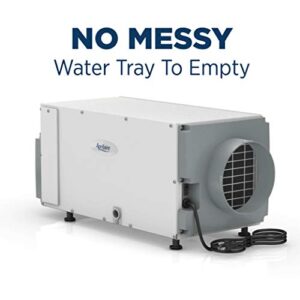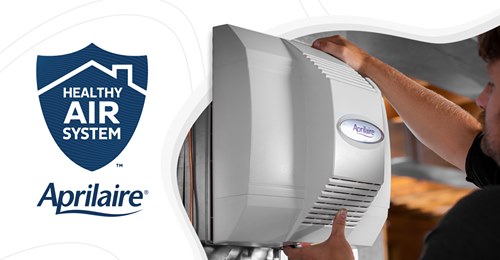Ever wondered why sometimes your home feels too dry, or maybe it feels like you’re living in a swamp? Well, the culprit is likely the humidity level. Today, we’re diving into the importance of maintaining the ideal relative humidity in your home, the effects of having humidity that’s too high or too low, and how whole-home humidifiers and dehumidifiers can be your best friends in achieving that perfect balance.
First, let’s talk about what type of humidity is affecting your indoor comfort.
Understanding the difference between relative humidity and absolute humidity is key to managing the comfort and health of your home environment. Here’s a breakdown of each term:
Absolute Humidity
Absolute humidity measures the actual amount of water vapor present in the air, regardless of the air’s temperature.
Key Points about Absolute Humidity
Direct Measurement: It provides a straightforward measure of how much moisture is in the air.
Temperature Independent: Absolute humidity doesn’t change with temperature. For instance, if you have 10 grams of water vapor in 1 cubic meter of air, it remains 10 grams regardless of whether the air is hot or cold.
Relative Humidity
Relative humidity, on the other hand, is a percentage that represents the current amount of water vapor in the air relative to the maximum amount of water vapor the air can hold at a specific temperature.
Key Points about Relative Humidity
Temperature Dependent: Relative humidity changes with air temperature because warm air can hold more moisture than cold air. For example, air at 68°F with a relative humidity of 50% contains half the water vapor it could potentially hold at that temperature.
Comfort Indicator: It’s a useful measure for understanding how comfortable or uncomfortable the air might feel. High relative humidity can make the air feel warmer and more oppressive, while low relative humidity can make it feel cooler and drier.
How They Work Together
Consider a summer day when the air temperature is 86°F. If the relative humidity is 50%, the air is holding half the water vapor it could hold at that temperature. On a winter day with an air temperature of 32°F and a relative humidity of 50%, the air holds much less water vapor than the summer day because cold air can’t hold as much moisture.
Ideal Indoor Humidity Levels
Now, let’s talk about the sweet spot for indoor humidity. The ideal relative humidity level for your home should be between 30% and 50%.
Keeping your home’s humidity within this range not only ensures comfort but also helps maintain the structural integrity of your house and the health of its inhabitants.
Effects of High Humidity
When the humidity levels soar above 50%, several issues can arise:
- Mold and Mildew Growth – High humidity creates a breeding ground for mold and mildew, which can damage your home and trigger allergic reactions.
- Dust Mites – These tiny creatures thrive in humid conditions and can worsen asthma and allergy symptoms.
- Structural Damage – Excess moisture can weaken wood, peel paint, and warp furniture.
- Uncomfortable Living Conditions – High humidity makes the air feel warmer than it is, leading to discomfort and increased use of air conditioning.
Effects of Low Humidity
On the flip side, when humidity levels drop below 30%, you might experience:
- Dry Skin and Irritation – Low humidity can lead to dry, itchy skin, and irritation in the eyes and respiratory tract.
- Static Electricity – Ever been zapped by a doorknob? Low humidity increases static electricity in your home.
- Damage to Wooden Furniture and Floors – Dry air can cause wood to crack and split.
- Increased Risk of Illness – Viruses, such as the flu, thrive in low humidity environments, increasing the likelihood of getting sick.
What is Considered High Humidity Outside?
When determining if you’re in a high humidity climate or if it’s going to feel sticky/muggy outside you’ll want to actually look at the dew point rather than the relative humidity. As we discussed, relative humidity is very temperature dependent so a day with relative humidity of 100 may feel less hot than a day with relative humidity of 75 depending on the temperature that day. The higher the dew point, the greater the amount of moisture in the air and the muggier it will feel.
Solving Humidity Issues
Whole-Home Dehumidifiers

If you’re battling high humidity, a whole-home dehumidifier can be a game-changer. These systems are integrated with your HVAC system to remove excess moisture from the air, helping you maintain a consistent and comfortable humidity level throughout your home.
Benefits include:
- Improved Air Quality: By reducing moisture, you minimize the risk of mold, mildew, and dust mites.
- Enhanced Comfort: Less moisture means a cooler, more comfortable living environment.
- Energy Efficiency: Your air conditioner won’t have to work as hard, leading to potential energy savings.
READ MORE: Whole Home Dehumidifiers
Whole-Home Humidifiers
For those dealing with low humidity, a whole-home humidifier can add the necessary moisture back into the air. These devices are also integrated with your HVAC system and work to maintain an optimal humidity level.
Benefits include:
- Healthier Living: Proper humidity levels can help alleviate dry skin, respiratory issues, and decrease the spread of viruses.
- Protection for Your Home: Keep your wooden furniture, floors, and musical instruments in top condition.
- Comfort: Enjoy a more comfortable living space with reduced static electricity and a warmer feeling air.
How do I know what my humidity level is?
A humidistat, also known as a hygrometer, is a device used to measure and regulate the humidity levels in your home. Place the humidistat in a central location where it can accurately measure the average humidity of the area. Avoid placing it near windows, doors, or direct sunlight, as these can give false readings. If you have a whole-home humidifier or dehumidifier system you can connect your humidistat to this so it can automatically signal the humidifier or dehumidifier to turn off/on to keep humidity as your desired level. Dust and dirt can affect the accuracy of the humidistat sensors so remember to keep them clean.
Struggling with humidity in your Cincinnati home? Call Quality Comfort.
Maintaining the ideal humidity level in your home is crucial for comfort, health, and the longevity of your house. Whether you’re dealing with high or low humidity, whole-home solutions like dehumidifiers and humidifiers can help you achieve that perfect balance. If you’re dealing with discomfort in your home due to humidity levels just give us a call at 513-620-4822 or book online 24/7. Estimates for humidity control products are always free!


